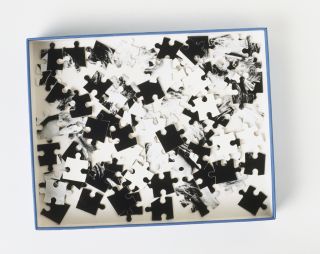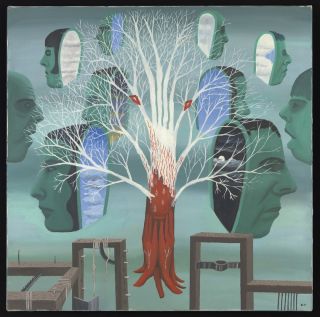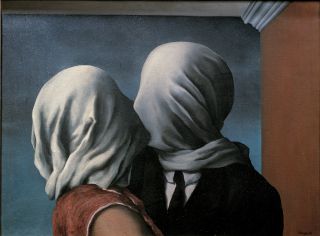Memory
The Super-Recognizers
Some people never forget a face.
Posted September 2, 2023 Reviewed by Tyler Woods
Key points
- We use faces for recognition, but discriminating one face from another involves a network of brain regions.
- Super-recognizers are as good at remembering faces as those with face blindness are bad.
- Tests for face recognition can be administered online or in a lab but differ from real-life identification.
- Super-recognizers may have a role in person identification for law enforcement.

In a small village in 16th-century France, Martin Guerre abandons his family, crosses the Pyrenees to fight for the king of Spain, and disappears "without a trace," leaving his wife "neither wife nor widow" (Davis, 1983).
Almost nine years later, a man claiming to be Martin Guerre comes to the village. Initially, he is welcomed by his wife and the townsfolk as he is well-informed "with accurate memories" about Martin's life. Eventually, over time, suspicions arise. This man is ultimately found to be an imposter when the actual Martin Guerre, who had lost a leg in the war, returns with a wooden leg. The imposter, alas, though repentant, is sent to the gallows (Davis).
The story, based on historical facts (Davis), has been recounted through the generations. It has been fictionalized and adapted into a French film, Le Retour de Martin Guerre (1982), as well as the American one, Sommersby (1993.)
The time of Martin Guerre was one without photographs, identity cards, fingerprinting, birth certificates, or even regularly kept parish records (Davis). Surprisingly, the imposter's ruse lasted three years, though it was unknown when his wife suspected the truth.

There are many ways people recognize each other. For example, when Odysseus, dressed as a common beggar, returns home to Ithaca after almost 20 years, his elderly nurse, Eurycleia, recognizes him from an old scar on his leg (Homer, The Odyssey, Book XIX).
The face, though, is generally the most important means of recognizing a person. Recognition is a "re-knowing" etymologically (OED). The ability to appreciate whether someone is familiar or not "is fundamental to our social functioning, a cornerstone of humanity" (Ramot et al., 2019). It involves retrieving and processing memories, experiences, and feelings, i.e., the "grammar of a face" (Belting, 2017).
We can gain considerable social information, including age, gender, attractiveness, mood, and even trustworthiness from a face. Further, it is a face that makes an unclothed body erotic; otherwise, body parts are merely anatomy (Karasu, 2017).
But a face can change with expression, lighting, and, of course, age. An oil painting portrait or a photograph can "suspend the flow of time" cross-sectionally (Belting), but even so, paint can crack or change texture and "develop a sense of history," and a photograph can fade (Weschler, 2023). Oscar Wilde's Dorian Gray retains his adonis appearance as his portrait ruthlessly ages, leading Dorian to spiritual and psychological ruin (Wilde, 1890).

There is considerable variability among the general population with respect to remembering and recognizing familiar from novel faces (Ramot et al.), with a strong genetic component (Dunn et al., 2020).
Those with prosopagnosia (i.e., face blindness), whether developmental, without evidence of any known lesion or neurological impairment, or acquired by trauma or disease, (Barton and Corrow, 2016; Russell et al., 2012), are particularly bad at faces. For them, faces lack familiarity, and they need to rely on other aspects, such as voice, clothing, patterns of gait, hairstyle, etc., to recognize someone (Karasu).
There are a select few, though, who never forget a face, i.e., who have "extraordinary face recognition," even when they have not seen a person in many decades. These are the super-recognizers, first identified by Russell et al., (2009).
"Overall, these 'super-recognizers' are about as good at face recognition and perception as developmental prosopagnosics are bad," wrote Russell and his colleagues. Neither Martin Guerre nor Odysseus would have fooled them.
What determines facial recognition? First-order information involves distinguishing a face from other objects (i.e., face detection.) Second-order information refers to how one face differs from another (Taubert et al., 2011). Faces also have configural properties, such as the distance between our features and their placement relative to each other, as well as specific featural properties (e.g., eyes, nose, mouth) and surface information, including skin pigment and texture, or eye color (Tanaka et al., 2016).
Discriminating one face from another is exceptionally complex; it involves a network of brain regions, including the fusiform face area, anterior hippocampus, inferior occipital gyrus, and the entire occipital-temporal region that integrate "visual, auditory, memory, and social circuits." The stronger the connections among these areas, the better subjects perform on facial recognition tests. (Ramot et al.).

In general, we perceive faces "holistically, i.e., as an "amalgamation" rather than as a "collection of discrete features" (Tanaka et al.). Researchers have found that super-recognizers tend to have a bias toward fixating on faces (i.e., face salience), which may facilitate social interaction and even extroversion (Linka et al., 2022).
They may also "sample more information" across a face than most people (Dunn et al., 2022), making use of all facial features, including the eyes, eyebrows, and mouth (Tardif et al., 2019). One study differentiated critical (e.g., lip thickness, hair, eye shape, and color) from noncritical (e.g., mouth, skin color, nose) features in determining facial identification (Abudarham et al., 2021).
Whether those who are super-recognizers are a distinct group or lie along a continuum remains open to question. Currently, there is "no fundamental definition or consensus" about diagnostic criteria, resulting in considerable heterogeneity in research findings (Ramon, 2021). Subsequent research will determine whether super-recognizers process facial information qualitatively, and not only quantitatively, in different ways. (Nador et al., 2021).

Tests such as Before They Were Famous and the Cambridge Face Memory Test are often used as screening tools (Russell et al., 2009). More recently, the UNSW Face Test can screen for super-recognizers (Dunn et al., 2020). Tests administered online or in a laboratory setting, though, may differ substantially from “real-world" recognition, where there is additional information, including body shape, gait, facial motion, or even tattoos. (Bate et al., 2019).
Further, the cognitive basis for the unusual abilities of super-recognizers is “entirely unclear” (Ramon). For example, there are "key shortcomings that limit our understanding," particularly whether they can be useful in law enforcement (Ramon et al., 2019).
For a discussion involving forensic investigation, see Mayer and Ramon, 2023, and for differences in response latency and accuracy of response between super-recognizers and forensic examiners, see Towler et al., 2023.
LinkedIn image: carballo/Shutterstock
References
Abudarham N. et al (2021). Developmental prosopagnosics and super recognizers rely on the same facial features used by individuals with normal face recognition abilities for face identification. Neuropsychologia 160: 107963. (8 pages).
Barton JJS; Corrow Sl (2016). The problem of being bad at faces. Neuropsychologia 89: 119-124.
Bate S et al. (2019). Redefining super recognition in the real world: skilled face or person identification recognizers? British Journal of Psychology 110(3): 480-482.
Belting H. (2017). Face and Mask: A Double History. (Translated from the German by Thomas S. Hansen and Abby J. Hansen). Princeton and Oxford: Princeton University Press.
Davis NZ (1983). The Return of Martin Guerre. Cambridge, MA: Harvard University Press.
Dunn JD. et al (2022): Face-information sampling in super-recognizers. Psychological Science 33(9): 1615-1630.
Dunn JD et al (2020). UNSW Face Test: a screening tool for super-recognizers. PLOS One 15(11): e0241747 (19 pages).
Homer. The Odyssey (2018). (Book XIX). Translated by Emily Wilson. New York: W.W. Norton & Company, Inc.
Karasu SR. (2017). ‘I shouldn’t know you again if we did meet:’ prosopagnosia. Hektoen International https://hekint.org/index.php?option=com_googlesearch_cse&n=30&view=googlesearchs&s=karasu+prosopagnosia (retrieved 8/25/23).
Linka M. et al (2022). Characteristic fixation biases in super-recognizers. Journal of Vision 22(8): 1-15.
Mayer M; Ramon M. (2023). Improving forensic perpetrator identification with super-recognizers. Proceedings of the National Academy of Sciences (PNAS) 120(20): e2220580120. (8 pages).
Nador et al. (2021). Psychophysical profiles in super-recognizers. Scientific Reports (Nature Portfolio) 11(1): 13184. (11 pages).
Oxford English Dictionary: “Recognition:” https://www.oed.com/dictionary/recognition_n?tab=meaning_and_use. (Retrieved: 8/25/23).
Ramon M. (2021). Super-recognizers—a novel diagnostic framework, 70 cases, and guidelines for future work. Neuropsychologia 158: 107809. (11 pages).
Ramon M; Bobak AK; White D. (2019). Super-recognizers: from the lab to the world and back again. British Journal of Psychology 110(3): 461-479.
Ramot M; Walsh C; Martin A. (2019). Multifaceted Integration: memory for faces is subserved by widespread connections between visual, memory, auditory, and social networks. The Journal of Neuroscience 39(25): 4976-4985.
Russell R; Chatterjee G; Nakayama K. (2012). Developmental prosopagnosia and super-recognition: no special role for surface reflectance processing. Neuropsychologia 50(2): 334-340.
Russell R; Duchaine B; Nakayama K. (2009). Super-recognizers: people with extraordinary face recognition ability. Psychonomic Bulletin & Review 16(2): 252-257.
Tanaka JW; Simonyi D. (2016). The ‘parts’ and wholes’ of face recognition: a review of the literature. Quarterly Journal of Experimental Psychology: 69(10): 1876-89.
Tardif J et al (2019). Use of face information varies systematically from developmental prosopagnosics to super-recognizers. Psychological Science 30(2): 300-308.
Taubert J. et al. (2011). The role of holistic processing in face perception: evidence from the face inversion effect. Vision Research 51(11): 1273-78.
Towler A et al. (2023). Diverse types of expertise in facial recognition. Scientific Reports (Nature Portfolio) 13: 11396 (15 pages).
Weschler L.(2023). Art and Science as Parallel and Divergent Ways of Knowing. John Templeton Foundation:
Wilde O. (2023). The Picture of Dorian Gray: (The Original 1890 Edition). Printed by Amazon.




